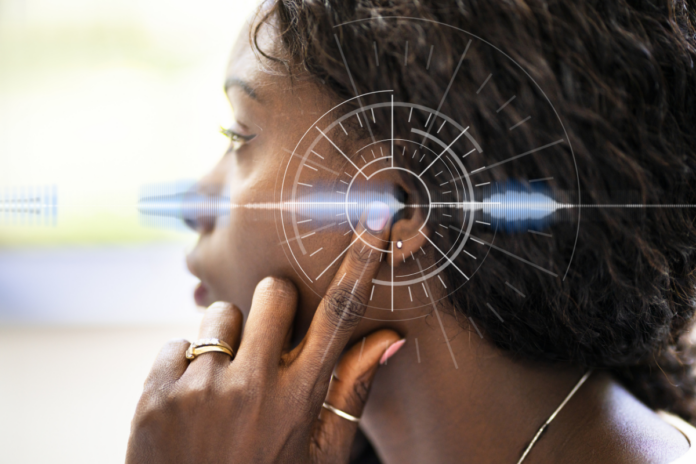Hearing impairment, a condition that affects millions of individuals worldwide, can significantly impact one’s quality of life. For those with severe hearing impairment, the struggle to communicate effectively and engage in everyday activities can be particularly challenging.
However, advancements in hearing aid technology are offering new hope and possibilities to improve the lives of these individuals. In this article, we will explore the latest innovations in hearing aid technology specifically designed for severe hearing impairment, focusing on their features, benefits, and potential to restore clarity and connectivity.
Digital Signal Processing (DSP) Revolution
One of the most significant advancements in hearing aid technology is the integration of sophisticated Digital Signal Processing (DSP) algorithms. These algorithms have transformed the way hearing aids process sound, making it possible to enhance speech comprehension and reduce background noise effectively.
For individuals with severe hearing impairment, understanding speech in noisy environments can be a major challenge. DSP technology helps distinguish between speech and noise, isolating and amplifying speech sounds while suppressing unwanted background sounds. This breakthrough has drastically improved the overall listening experience, enabling individuals to participate more actively in conversations and social interactions.
Directional Microphones and Beamforming
Directional microphone systems have become a crucial component of modern hearing aids. These microphones are designed to focus on sounds coming from specific directions while reducing sounds from other directions. Beamforming technology takes this concept further by dynamically adjusting microphone sensitivity based on the direction of the sound source.
This innovation greatly aids individuals with severe hearing impairment by improving speech understanding, especially in noisy environments like restaurants or crowded public spaces. By isolating the primary sound source and minimizing background noise, these technologies offer enhanced clarity and an improved signal-to-noise ratio.
Wireless Connectivity and Smartphone Integration
The integration of wireless connectivity and smartphone compatibility has revolutionized how hearing aids are used and controlled. Many modern hearing aids can connect directly to smartphones, allowing users to adjust settings, stream audio, and even take phone calls directly through their hearing aids. For those with severe hearing impairment, this feature offers unprecedented convenience and accessibility.
Streaming audio from a smartphone, television, or other devices directly to the hearing aids ensures a clear and personalized listening experience. Additionally, smartphone apps enable users to fine-tune settings based on their preferences and environment, providing a level of customization that was not possible in the past.
Artificial Intelligence (AI) for Personalization
Artificial Intelligence has made its way into the realm of hearing aid technology, contributing to personalized and adaptive listening experiences. AI algorithms can analyze a user’s listening habits, preferences, and environments to make real-time adjustments to the hearing aid settings.
This ensures optimal performance across various situations without requiring constant manual adjustments. For individuals with severe hearing impairment, this technology can significantly reduce the frustration of constantly tinkering with settings and provide a seamless listening experience as they move between different environments.
Rechargeable Batteries and Extended Battery Life
Older hearing aids often relied on disposable batteries that needed frequent replacement. However, recent advancements have introduced rechargeable hearing aids with extended battery life.
This is a game-changer for individuals with severe hearing impairment, as they can now enjoy a full day of use without worrying about battery replacements. The convenience of rechargeable batteries also ensures that users never run out of power unexpectedly, allowing them to stay connected and engaged in various activities without interruption.
Tinnitus Management
Many individuals with severe hearing impairment also experience tinnitus, a persistent ringing or buzzing in the ears. Some modern hearing aids are equipped with tinnitus management features that provide relief from these bothersome sounds.
These features may include sound therapy options, white noise generation, or customized masking sounds. By integrating tinnitus management into hearing aids, individuals can find comfort and relief from both their hearing impairment and the accompanying tinnitus symptoms.
Conclusion
The journey to find clarity in a world filled with sound is undergoing a remarkable transformation, thanks to the latest advancements in hearing aid technology.
For individuals with severe hearing impairment, these innovations offer more than just amplification; they provide an opportunity to reconnect with the world around them. The Kansas City Star has compiled a list of top-performing hearing aids, complete with their respective features and price ranges.
From advanced signal processing and directional microphones to AI-driven personalization and tinnitus management, the modern hearing aid landscape is rich with solutions tailored to individual needs.
As technology continues to evolve, the future holds even greater promise for those seeking to overcome the challenges of severe hearing impairment and embrace a life of improved clarity and connection.










